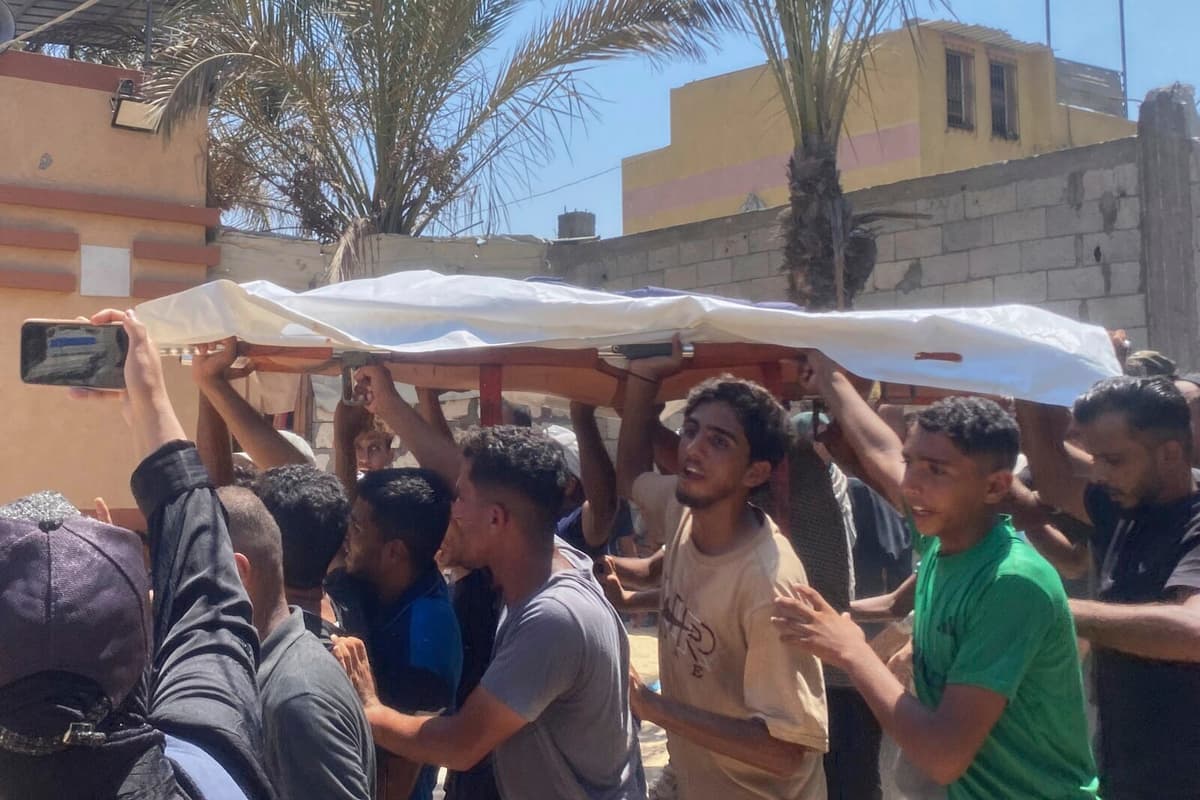What happened?
Shortly after 10 am local time on Monday, Israel launched an attack on the facade of Nasser Hospital and an evacuation staircase running on the outside of the building. More specifically, it was the hospital's fourth and top floor that was attacked. The staircase and roof have long attracted journalists, as it is one of the few places from which you can get an overview of Khan Yunis. A live link was broadcast from there to global news agencies, a link that was broken when the attack occurred.
The first attack took place with a drone, according to BBC. About five minutes later, when rescue personnel and journalists were in the process of helping the victims, the second attack came – with a rocket or artillery fire from a tank, the reports differ.
It was journalists, patients, nurses and representatives of the civil defense in the staircase. We became a direct target, says Reuters journalist Hatem Sadeq Omar, who was himself injured, to CNN.
What happened inside the hospital?
Nasser Hospital is one of the few healthcare facilities that has some capacity left in war-torn southern Gaza. A video clip recorded immediately after the first attack shows the hospital's spokesperson, Dr. Mohammad Saqer, holding up what appears to be a blood-stained doctor's coat. Then the second detonation occurs, the camera shakes and Saqer and people around him run for cover.
A healthcare worker tells BBC that she was in the intensive care unit to check on a patient who was on a ventilator when she heard a "very loud" explosion.
A few seconds later, hospital staff covered in dust and blood came in. They were extremely stressed and informed us that we had to evacuate immediately.
What do we know about the victims?
At least 20 people were killed and another 50 injured, according to the employers and contractors of the killed journalists, WHO and the Hamas-controlled health department in Gaza.
Among the dead are journalists Hussam al-Masri and Mohammed Salama, who worked for the news agency Reuters and Al Jazeera, respectively, as well as Ahmed Abu Aziz, Moaz Abu Taha and Mariam Abu Dagga. The latter had AP among her contractors.
Among the dead are also healthcare staff, patients and employees of Gaza's civil defense, according to authorities.
Sveriges Radio's employee, the Swedish citizen Baraa Lafi, was injured in the attack.
What does Israel say?
Israel's Prime Minister Benjamin Netanyahu has called the double attack "a tragic accident".
The country's military confirms the attack on Khan Yunis and says that the involved Golan Brigade "discovered a camera placed by Hamas on the grounds of Nasser Hospital and that the camera was used to monitor the activities of the IDF forces – and to direct terrorist acts against them".
What does the outside world say?
The attack is condemned by a long list of countries, the UN and other organizations. The news agencies Reuters and AP say they are furious. International law experts believe that the attack may constitute a war crime.
Facts: The laws of war
TT
Civilians may not be attacked in armed conflicts and must be protected, according to humanitarian principles that the international community has agreed on.
The laws of war – formally international humanitarian law – aim to spare combatants, the wounded, prisoners of war and civilians from unnecessary suffering. Media workers should be treated and protected in the same way as other civilians in war.
The core of the laws consists of the four so-called Geneva Conventions from 1949, which have been ratified by nearly 200 states. Both state and non-state actors are covered by the laws.
The key words are distinction (distinction between civilians and combatants), proportionality (the military significance of an attack must be weighed against the risks it poses to civilians) and precaution (all parties must take all possible precautions to ensure that attacks are only directed at military targets).
The fact that non-civilian persons are among civilians does not mean that the group as a whole can be considered a legitimate target. The civilian population may not be used as so-called human shields to defend against attacks.
The special protective emblem of the healthcare system must be respected and the warring parties must do what they can to facilitate humanitarian efforts.
Source: UN, Red Cross and National Encyclopedia
More than 62,000 Palestinians in the Gaza Strip have been killed since the start of the war, which followed the terrorist-stamped Hamas attack on Israel on October 7, 2023. The figures come from health authorities in Hamas-controlled Gaza, which do not distinguish between civilians and combatants.
A large proportion of the dead are women and children. Last year, Unicef estimated that one million children in the area are in need of psychological and psychosocial support.
Before the war, the population of Gaza consisted of 2.1 million people. Around 90 percent of them have been displaced within the area's borders, according to the UN. Israel's intense bombardment has led to the destruction of a large part of the area's hospitals and schools, either completely or partially. The spring's Israeli blockade has led to famine and starvation in Gaza.
During the Hamas attack on October 7, 2023, more than 1,100 people were killed in Israel, the majority unarmed civilians. In addition, nearly 250 people, including children, were taken hostage.
Sources: Ocha, Unicef and news agencies





